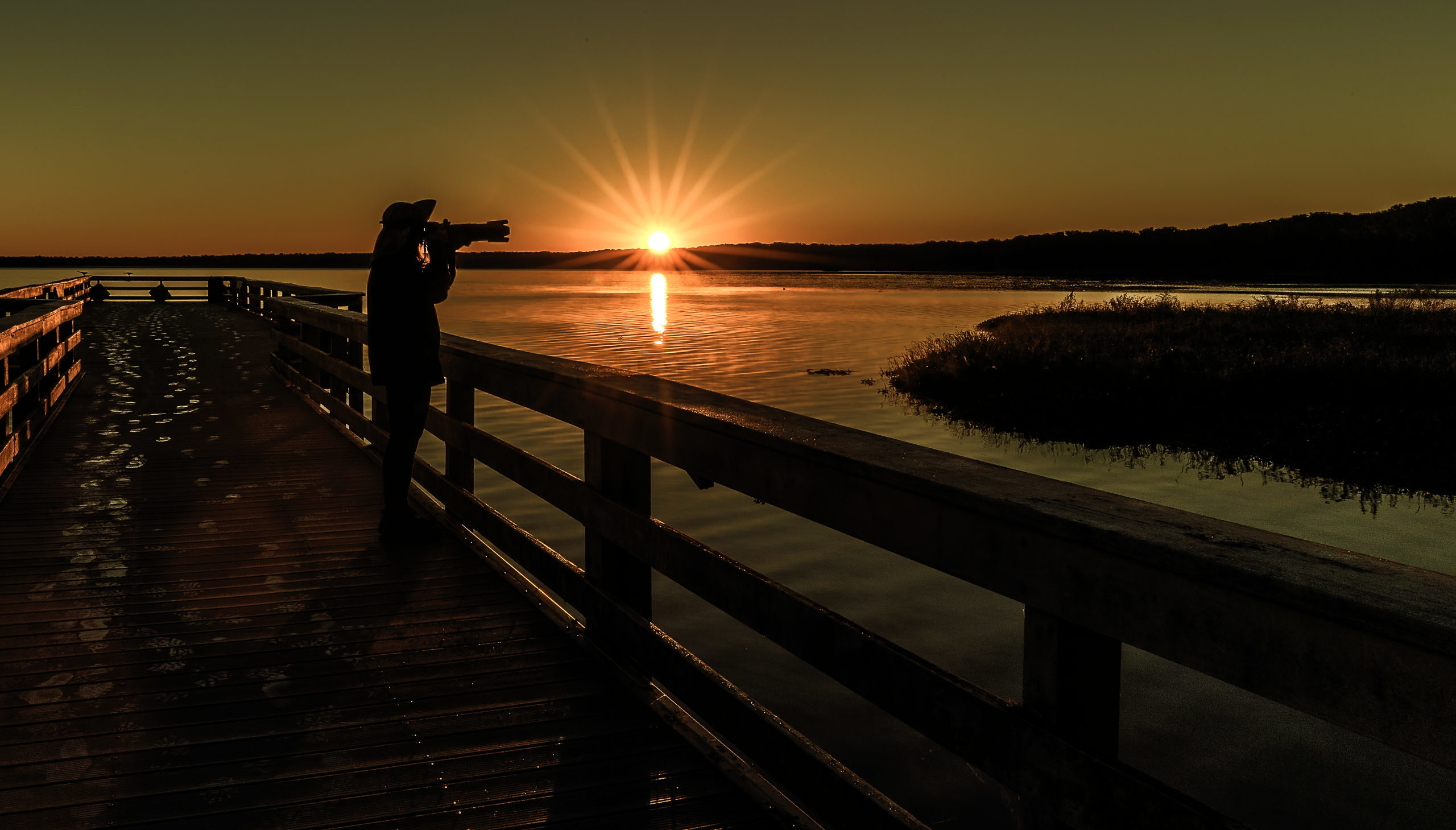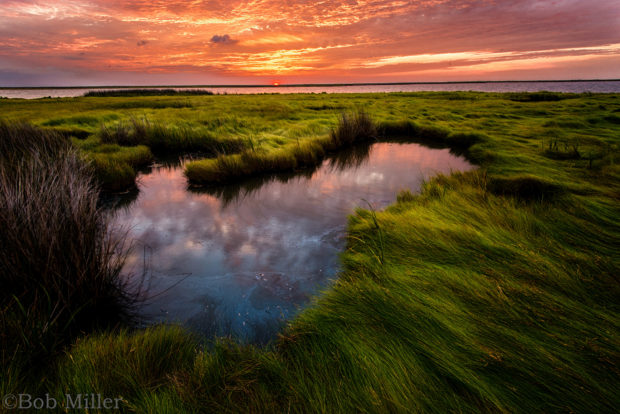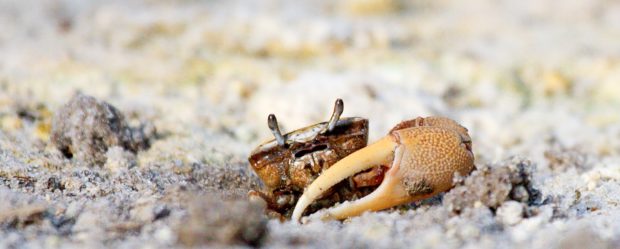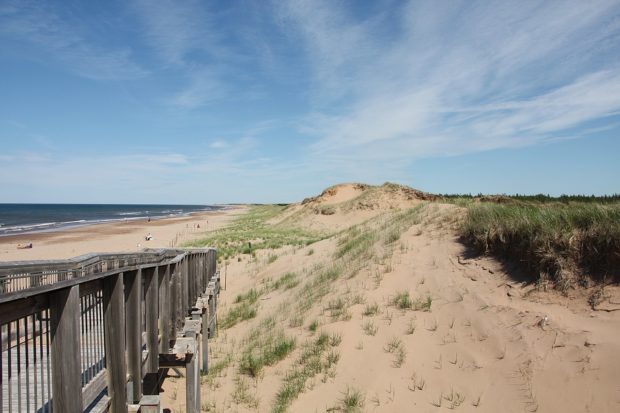We have much more to do and your continued support is needed now more than ever.
Spotting Resilience Along Your Atlantic Coastline Beaches

As Spring fades to Summer and the weather gets hot, maybe too hot, it’s a wonderful time to visit the beach. From the chilly waters of Maine to the white sands of Florida, the Atlantic coastline offers some of the most iconic beaches in the country.
These beautifully diverse beaches, visited by millions of people each summer, are as important to our identities as they are to the safety of the communities and habitats that surround them. Their features act as fundamental barriers between the ocean and land, and offer many benefits worth exploring. Take a look at these easily identifiable features contributing to coastal resilience that you can spot on your next beach outing.
Salt Marshes

Most oceanic beaches have salt marshes in view, easily identifiable by their tall green or brownish grasses, sedges, muddy soils, and all sorts of recognizable critters (like the fiddler crab!). These marshes might not immediately strike you as profound or beautiful, especially because they’ve got a knack to occupy your nostrils with unpleasant smells, but I’ve got some news for you: these are one of the most important ecosystems in the world. You read that right, your favorite beaches’—often less-cherished neighbors—house extensive benefits to humans and wildlife alike.

Salt marshes are some of the most biologically important resources on this planet. They buffer stormy seas, reduce flooding, slow shoreline erosion, absorb excess nutrients before they reach the ocean, act as essential nurseries for many wildlife species (many commercial fisheries stock we eat start their lives here), and provide habitats to an immense variety of animals.
These resilient places protect our beaches, infrastructure, and fish stocks, however, we aren’t the only ones grateful for their services! Next time you’re at the beach be sure to check out all the animals and fish that call the salt marsh home–you never know what you might find!
Sand Dunes
What’s the difference between coastal sand dunes and the normal beach? It’s complicated. Yet, studies have found that some major distinctions of sand dunes include rounder sands than adjacent beach sands and a higher silt content composed of heavier minerals. The so-called beach foreshores, on the other hand, usually contain more shells, calcareous organisms, and a higher mica content. That’s a big difference, foreshore.
Dunes often appear as hilly features towards the back of the beach, and larger beaches often have boardwalks traversing them. Usually formed from the perpetual onslaught of coastal winds, sand dunes gather a continuous supply of heavier sediment and healthy dunes are typically bolstered by vegetation with extensive root systems. I do not advise setting up your beach spot here.

During normal conditions, water may not reach the base of coastal dunes, and that’s just fine. As the waves roll in and out, the beach as you know it is constantly moving sediment. As a wise man almost said, “You never step in the same sand twice.” You might ask yourself, what then is the purpose of these dunes?
It turns out that they play an integral role in reducing the impacts from coastal storms by acting as a buffer against flooding and storm surges. Moreover, they act as a repository for sand that will naturally replenish beaches in the aftermath of intense storms. Therefore, it’s important to preserve these areas, even if they might make your walk from the parking lot a bit more difficult.
Oyster Reefs
Unless you’re a snorkeler, oyster reefs are difficult to spot. In fact, you may never see them, but you are surely experiencing the benefits of their existence every time you visit the beach. Oyster reefs are found in calm waters along the coasts and are composed of. . . well. . . oysters.
Born as tiny swimming larvae, oysters eventually attach to a solid surface, where they’ll spend the rest of their lives. Rocks, shells, piers, and other structures can accumulate oysters over time, shell by shell. Given enough space and time, these structures become reefs.

Oyster reefs offer countless benefits to marine and estuarine species, humans, economies, and infrastructure. They provide habitat for fish and crabs, while also serving as a great food resource for foraging species. Additionally, oyster reefs act as nursery grounds for iconic species like anchovies, blue crabs, flounder, herring, shrimp, striped bass, and more!
Oysters also filter water, making it healthier and cleaner. Reefs also play an important role in coastal resilience as they can protect oceanfront communities from the impact of coastal storms by reducing wave energy, preventing erosion, and fortifying wetlands as a protective barrier.
Coastal ecosystems provide essential value to the health of wildlife, people, and our economy. Ready to go spot salt marshes, sand dunes, and oyster reefs on your next trip? Sea you at the beach.





















